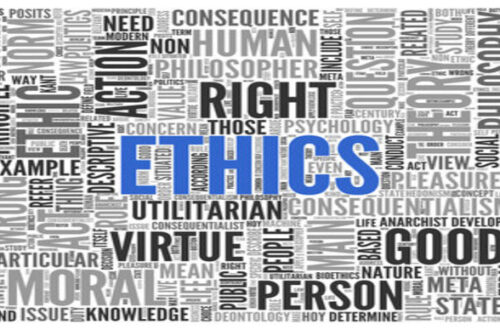INTRODUCTION
“A genocide begins with the killing of one man – not for what he has done, but because of who he is.”
-Kofi Annan, Secretary General of the United Nations (Nobel Lecture, 2001)
Genocide is a small eight-letter word, yet it represents the most dangerous and disgusting act of killing hundreds of thousands of people just because of their identity, class, race, and culture. Genocide is defined by Article II of the United Nations Genocide Convention (1948) as: Any of the following acts committed with the intent to destroy, in whole or in part, a national, ethnical, racial, or religious group, as such:
1. Killing members of the group;
2. Causing serious bodily or mental harm to members of the group;
3. Deliberately inflicting on the group conditions of life calculated to bring about its physical destruction in whole or in part;
4. Imposing measures intended to prevent births within the group;
5. Forcibly transferring children of the group to another group
It is considered one of the most heinous crimes in the entire history of humanity, where people were killed not because of their deeds or actions, but because of their identity and cultural philosophy. It is a deliberative and systematic crime, backed by a mala fide intention to suppress a specific class and exert one’s influence and dominance globally.
What makes genocide so horrifying is not only the scale of killing but the intention behind it, and the most difficult task is to prove that intention. To make certain action as genocide, it is essential to establish that there is an intent on the part of the perpetrator to destroy the specific national, ethnic, racial, or religious group. There is a very popular saying in English, Rome wasn’t built in a day, Similarly, Genocide also doesn’t happen overnight but is a long process of building propaganda, dehumanization, silence of bystanders, and failure of institutions. In this blog, we have tried to explore the definition, types, causes, notable examples, legal mechanisms, and global responses to genocide.
KEYWORDS: Genocide, International Criminal Law, Crimes Against Humanity, UN Genocide Convention, Human Rights Violations, Responsibility to Protect (R2P), International Criminal Court (ICC)
ORIGIN
There are various notable examples of Genocide from the past to present that have deeply shaken the foundation of humanity. Polish-Jewish lawyer Raphael Lemkin was the first person to coin the term genocide in 1944, by combining the Greek word “genos”, meaning “race or tribe”, and the Latin “cide”, which means killing. In his book Axis Rule in Occupied Europe, Lemkin stated genocide to be “the destruction of a nation or an ethnic group” both physically and culturally. Even his work served as a foundation for the 1948 United Nations Convention on the Prevention and Punishment of the Crime of Genocide, which marked the first human rights treaty on an international level after the Second World War.4
TYPES OF GENOCIDE
Although the UN Genocide Convention (1948) defines genocide narrowly as an act intended to destroy a national, ethnical, racial, or religious group but many scholars have differentiated the various types of genocide based on the motive, methods, and targets. They are:
Physical Genocide: It is the most common and direct form, which involves the mass killing of individuals from a particular group with the intent to destroy that group in whole or in part.
Biological Genocide: This strategy targets specific populations by either preventing births or forcibly relocating children to different groups, thus eliminating future generations either by way of kidnapping, forceful abortion, or sterilization.
Cultural Genocide: Although it is not explicitly stated in the 1948 Genocide Convention, cultural genocide is increasingly recognized within the framework of international human rights law as the instrument to eradicate the cultural, religious, or social institutions of a group by destroying the religious sites, banning to follow native customs and traditions, etc.
Political Genocide: Although it is not included in the UN Genocide Convention, there is an argument some scholars make regarding its inclusion. It means to systematic elimination of political opponents or ideological groups.
Gender based Genocide: This focuses on people because of their sex. Women and girls can be victims of sexual violence, including rape and sexual slavery, as well as forced sterilization. Men may be subject to mass executions.
These are certain types of Genocides which need to be included in the definition, making it broader and giving it a widespread effect.
CAUSES OF GENOCIDE
Genocide doesn’t erupt in a vacuum but has derived its outrage from complex political, social, economic, and historical factors. These are mainly:
•Ethnic, Religious, or Racial Hatred
•Political Power Struggles
•Colonial Legacy and Historical Grievances
•Economic Instability and Competition
•Propaganda and Dehumanization
•Nationalism and Extremist Ideologies
•Weak Rule of Law and Lack of Accountability
•Silence of the International Community and mute spectators
These are very few; more causes have blown the air and added fuel to the fire, making the destruction more painful and harmful. The most important cause is the feeling of hatred and enmity among the various groups because of social, economic, or political differences, or due to political clout, or maybe because of a difference in perception.
NOTABLE EXAMPLES FROM THE PAST
There are certain glimpses of the horrifying incidents that have taken place in the past, which not only shook the entire humanity but also inculcated the feeling of hatred and enmity among the different groups and classes.
Certain legal frameworks regulate the excessive heinous cases of Genocide through different forms of punishments and sanctions. Not only an individual state but the entire globe was mutually cooperating and facilitating support for the prevention of the crime of genocide.
The Convention on the Prevention and Punishment of the Crime of Genocide (1948)
• Adopted by: United Nations General Assembly on December 9, 1948. it defined Genocide in Article 2 as acts committed with the intent to destroy, in whole or in part, a national, ethnic, racial, or religious group.
International Criminal Tribunal for the former Yugoslavia (ICTY, 1993)
• Established by the UN Security Council.
• Prosecuted war crimes, crimes against humanity, and genocide in the Balkans (e.g., Srebrenica massacre).
International Criminal Tribunal for Rwanda (ICTR, 1994)
• Also established by the UN Security Council.
• Tried individuals responsible for the 1994 Rwandan Genocide.
Extraordinary Chambers in the Courts of Cambodia (ECCC)
• Joint UN-Cambodian court prosecuting leaders of the Khmer Rouge regime.
International Criminal Court (ICC)
• Established by the Rome Statute (1998), operational since 2002.
• Jurisdiction: Genocide, crimes against humanity, war crimes, and aggression.
• Can prosecute individuals if national courts are unwilling or unable.
European Court of Human Rights (ECHR)
• Though not a genocide court, it has ruled on genocide-related cases involving state responsibility.
African Court on Human and Peoples’ Rights (AfCHPR)
• Can address genocide as a violation of human rights obligations.
National Universal Jurisdiction Laws
• Some countries (e.g., Germany, Spain) allow national courts to prosecute genocide regardless of where it occurred.
United Nations Office on Genocide Prevention and the Responsibility to Protect (UNOGPR2P)
• Monitors early warning signs.
• Advises the UN Secretary-General and member states.
Responsibility to Protect (R2P Doctrine, 2005)
• Endorsed at the 2005 UN World Summit.
• States have a responsibility to protect populations from genocide, war crimes, ethnic cleansing, and crimes against humanity.
• If states fail, the international community must intervene diplomatically, economically, or militarily.
CONCLUSION
A lot of progress has been made on the part of the international bodies concerning the recognition and prevention of genocide. Legal documents such as the 1948 Genocide Convention, along with the creation of national tribunals and the International Criminal Court, have provided necessary frameworks to prosecute offenders and prevent future barbaric acts. Global mechanisms, such as the Responsibility to Protect doctrine, highlight evolving social interests focused on prevention, accountability, and victim protection.
These legal tools remain ineffective because a gap exists between the law itself and its practical application. There is a need to strengthen international cooperation, enhance early warning mechanisms, and ensure uniform implementation of international law. Genocide, in the end, reflects a legal problem that needs to be resolved on an urgent basis before it shatters the entire foundation of humanity. The duty to prevent and punish genocide is not simply a matter of international law but a reflection of our collective responsibility to uphold human dignity.
REFRENCES
1 Quotations, HREC Education, https://education.holodomor.ca/teaching-materials/quotations/ (last visited June 8, 2025).
2 Definition of Genocide, United Nations Office on Genocide Prevention and the Responsibility to Protect, https://www.un.org/en/genocide-prevention/definition (last visited June 8, 2025).3 Definition of Genocide, United Nations Office on Genocide Prevention and the Responsibility to Protect, https://www.un.org/en/genocide-prevention/definition (last visited June 8, 2025).
4 The Origin, We Remember, Presidency of the Republic of Türkiye, https://weremember.gov.tr/what-is-genocide-2/the-origin.html (last visited June 8, 2025).5 United Nations Office on Genocide Prevention and the Responsibility to Protect, https://www.un.org/en/genocide-prevention/ (last visited June 11, 2025).6 What Are the Main Causes of Genocide?, E-International Relations, https://www.e-ir.info/2012/07/12/what-are-the-main-causes-of-genocide/ (last visited June 11, 2025).7 Modern Era Genocides, Genocide Education, https://genocideeducation.org/resources/modern-era-genocides/ (last visited June 11, 2025).
8 United Nations Office on Genocide Prevention and the Responsibility to Protect, About the Office, https://www.un.org/en/genocide-prevention/about-office.shtml (last visited June 11, 2025).9 International Commission on Intervention and State Sovereignty, The Responsibility to Protect (2001), https://responsibilitytoprotect.org/ICISS%20Report.pdf (last visited June 11, 2025).






